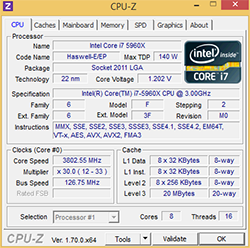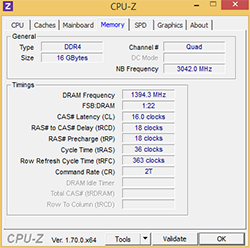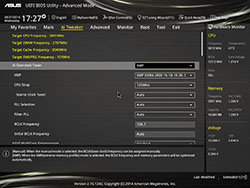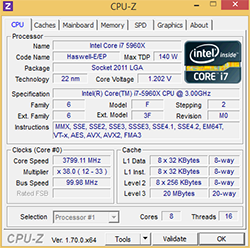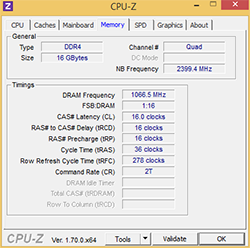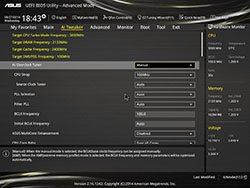Testing methodology
Comparison Memory |
||
|---|---|---|
Corsair Vengeance LPX 2,800 |
Corsair Vengeance LPX 2,800
|
|
| Model | CMK16GX4MA2800C16 |
CMK16GX4MA2800C16 |
| Capacity | 16GB (4x4GB) |
16GB (4x4GB) |
| Speed | 2,800MHz |
2,133MHz |
| Timings | 16-18-18-36-2T |
16-18-18-36-2T |
| Voltage | 1.20V |
1.20V |
| Price* | £250 |
NA |
| Cost per GB* | £15.62 |
NA |
| *Approximate, correct at time of writing | ||
Test Platform |
||
| CPU | Intel Core i7-5960X | |
| Motherboard | Asus X99-Deluxe (5501 BIOS) | |
| Storage Device | Crucial MX100 512GB | |
| Graphics Card | EVGA GeForce GTX 780 Ti (340.52 drivers) | |
| Power Supply | Corsair AX760i | |
| Operating System | Windows 8.1 64-bit | |
Benchmarks |
||
| HEXUS.PiFast | Our number-crunching benchmark stresses a single core by calculating Pi to 10m places | |
| CINEBENCH R15 | Using Cinebench's multi-CPU render, this cross-platform benchmark stresses all cores | |
| HandBrake 0.9.9.1 | Free-to-use video encoder that stresses all CPU cores (64-bit) | |
| AIDA64 v4.60.3124 | Memory analysis tool supporting Haswell CPUs | |
| 3DMark | DX11, Fire Strike default test | |
| BioShock Infinite | DX11, 1,920x1,080, ultra quality | |
| Batman: Arkham Origins | DX11, 1,920x1,080, enhanced quality | |
| Total War: Rome II | DX11, 1,920x1,080, ultra quality | |
Notes
How to evaluate DDR4 memory when it's so new? The simplest method is to run the same Corsair pack at 2,133MHz with automatic settings in the Asus BIOS, keeping latencies identical, so we can show the performance difference between choosing 2,133MHz or 2,800MHz RAM.
Yet getting to the 2,800MHz frequency certainly isn't straightforward. The normal procedure is to input the desired frequency, change the timings and then boot, without touching any parameter relating to the CPU, thus keeping the base clock at 100MHz. Our Asus X99-Deluxe board, however, simply doesn't boot when run in this fashion, showing memory-related errors on the debug LED. We've later learned this is an Intel CPU-related issue, so if you want to run memory at faster than 2,666MHz, you need to increase the base clock accordingly.
The only method of achieving the correct timings and speeds is to use built-in XMP settings. Doing this invokes a CPU strap and base clock of 125MHz, pushing the CPU speed out of the default specification. We want to lock the CPU speed to a a certain frequency and then see what effect memory timings and frequency have on our benchmarks, rather than what effect the CPU imposes. The way to do this is to select a CPU speed - 3.8GHz in our case - and toggle the other parameters to fit.
2,800MHz DDR4
We need to reduce the DRAM frequency a touch to fit into an all-core 3.8GHz CPU speed, with the Corsair running at 2,787MHz. The comparison 2,133MHz runs just fine, and we set the all-core CPU multiplier to a matching 3.8GHz. It would be nice if the memory just run at 2,800MHz without having to meddle with the base clock at all.
2,133MHz DDR4
Overclocking
We've chosen three arbitrary speeds and timings in order to evaluate the overclocking potential of the modules. Voltage was raised from 1.20V to 1.35V.
2,800MHz (15-15-15-36-2T) |
3,0000MHz (16-16-16-36-2T) |
3,200MHz (16-16-16-32-2T) |
|
|---|---|---|---|
| Corsair Vengeance LPX @ 1.35V |
|||






